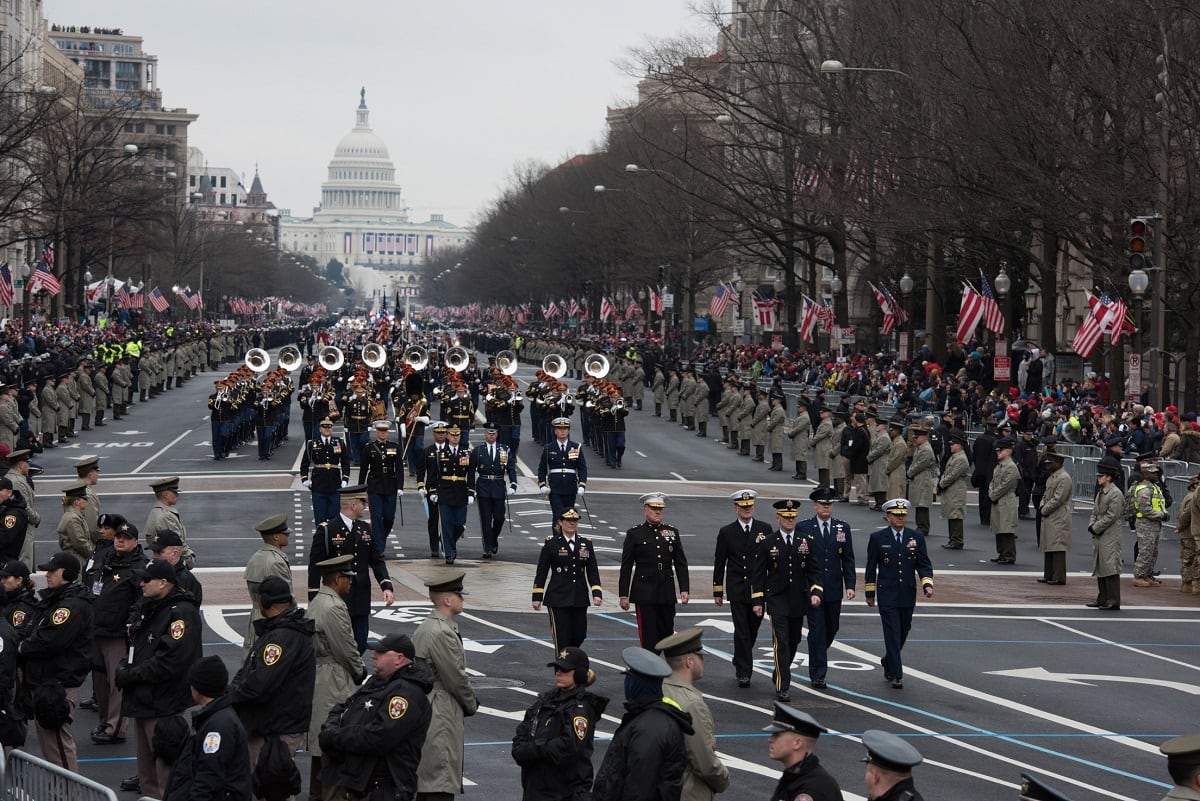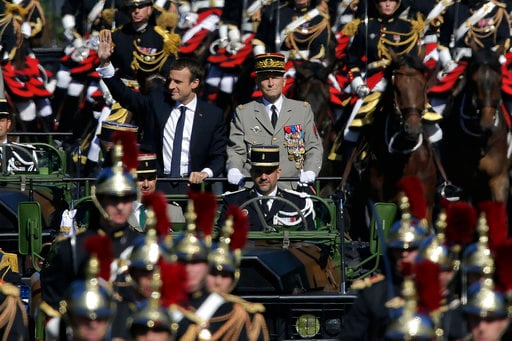NEW: OMB Director Mulvaney says President Trump's military parade would likely cost between $10 million and $30 million. pic.twitter.com/DnHTHjjMTG
— NBC News (@NBCNews) February 14, 2018
WASHINGTON — President Donald Trump’s proposed military parade could cost as much as $30 million, White House budget director Mick Mulvaney said Wednesday.
The parade could cost between $10 million and $30 million, depending on its length, Mulvaney told the House Budget Committee. That cost is not reflected in Trump’s proposed 2019 budget that was presented Monday, Mulvaney said, “because it’s come up at the last minute.”
Mulvaney’s comments were part of a testy exchange with California Democratic Rep. Barbara Lee, who railed against the budget’s deep cuts to social programs.
The proposed budget requests $686 billion for the military and reflects Congress’s recent bipartisan budget deal.
Earlier this month, White House and Pentagon officials confirmed reports that Trump has asked military leaders for the outline of large-scale parade to showcase troops and military equipment. Defense Secretary Jim Mattis said last week he was developing several options for the president, and the Pentagon has tasked the Army to be the executive agent for the effort.
However, a recent Military Times poll found that the vast majority of respondents oppose the idea for a parade. With almost 98,000 people voting as of Wednesday, the majority, 88 percent, said the military has more important needs to address.
White House spokeswoman Sarah Sanders said the goal is to create an event where the entire country “can come together to show support and honor our military.”
Democratic lawmakers have introduced measures to stop a parade, calling it a waste of time and resources.
RELATED

“I want to ask you about this military parade that the president’s proposing. You know, the parade that is very similar to those that’s held in authoritarian countries like in North Korea,” Lee said. “How much is that parade going to cost, and where is that money coming from?”
“We actually have had military parades in this country before. We actually had one in the 1990s,” Mulvaney said.
“I’ve seen cost estimates of anywhere from $10 million to $30 million, depending on the size of the parade, the scope of it, the length of it,” Mulvaney added. “We will continue to work with you folks if we decide to continue with that initiative.”

Mulvaney said the parade costs would be determined by the length of the parade, for example whether it lasted one hour or five hours, which would increase the number of troops and equipment needed for the event.
“We’ve not done much research on it yet,” Mulvaney said.
Lee pressed on who would decide on the parade — and who would pay for it.
“If who decides to push forward, you mean the president?” Lee asked.
“Yes, ma’am, that’s who I work for,” Mulvaney said.
“OK. I’m sorry,” Lee said back. “I thought you said ‘we decide.’”
“‘We’ being the administration,” Mulvaney said. “I’m sorry.”
Mulvaney acknowledged that Congress would have to approve the funds.
“But, of course, you’d have to appropriate funds for it,” Mulvaney said.
Military Times Capitol Hill bureau chief Leo Shane III contributed to this report.
Joe Gould was the senior Pentagon reporter for Defense News, covering the intersection of national security policy, politics and the defense industry. He had previously served as Congress reporter.
Tara Copp is a Pentagon correspondent for the Associated Press. She was previously Pentagon bureau chief for Sightline Media Group.




